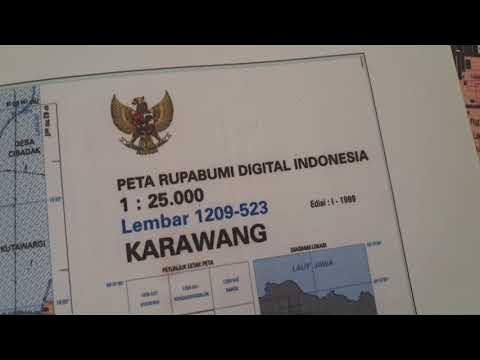Definitive Guide to Weather Map Analysis - Part 1 - Contour Analysis Basics
Summary
TLDRIn this video, Trey introduces a new series on weather map analysis, focusing on the importance of understanding various weather maps for accurate forecasting. The video covers the basics of contour analysis, also known as isoplething, and explains how to read isopleths such as isobars, isotherms, and geopotential height contours. Trey goes through key rules for creating these maps, including the need for interpolation and avoiding errors like crossing isopleths. He demonstrates the process through an example and emphasizes that mastering this skill requires practice. The series will continue with more in-depth exploration of surface and upper-air maps.
Takeaways
- 😀 This series is focused on weather map analysis, an essential part of severe weather forecasting.
- 🌍 Understanding weather maps, including surface and upper air maps, is critical for making accurate forecasts.
- 📊 Contour analysis, also known as isoplething, involves drawing lines of equal values (isopleths) on weather maps to visualize data.
- 📏 Isopleths can never cross or merge; they should always represent a continuous gradient.
- 📈 Common isopleths include isobars (for pressure), isotherms (for temperature), isodrosotherms (for dew point), and isotax (for wind speed).
- 🌤 Geopotential height lines on upper air maps are called isohights, and they represent the height of a constant pressure surface above sea level.
- 📍 When doing isopleth analysis, always label the isopleths at the ends and possibly in the middle to keep the map organized.
- ✏️ Isopleth analysis is an art more than a science, and it's crucial to use a pencil and eraser for corrections during hand-drawn analyses.
- 🛑 Isopleths should never have higher values on both sides; they must represent lower values on one side and higher values on the other.
- 🔄 Interpolation is key in contour analysis, assuming a constant gradient between two data points to determine the values in between.
- 🌐 The video will delve deeper into surface maps and upper air maps in future installments, teaching viewers how to analyze different levels of the atmosphere.
Q & A
What is the primary focus of this video series?
-The primary focus of this video series is to teach viewers how to read and analyze weather maps, an essential skill for severe weather forecasting.
What are isopleths in meteorology?
-Isopleths are lines of equal value or constant value across a weather map. They represent various meteorological variables, such as pressure, temperature, dew point, and wind speed.
What is the difference between isobars and isohights?
-Isobars are isopleths that represent lines of equal atmospheric pressure, typically used on surface maps. Isohights, on the other hand, are isopleths used on upper air maps to represent equal geopotential height at specific pressure levels, like the 500 millibar surface.
What is the importance of contour analysis in weather forecasting?
-Contour analysis helps meteorologists visualize the distribution of various atmospheric conditions, enabling them to forecast weather patterns, such as pressure systems, temperature variations, and wind flow, which are critical for predicting severe weather events.
What rule must be followed regarding isopleths crossing on a weather map?
-Isopleths can never cross or merge. If they do, it indicates an error in the analysis, as each isopleth should represent a constant gradient without overlapping.
What is the recommended tool for performing contour analysis by hand?
-It is recommended to use a pencil and eraser when performing contour analysis by hand. Since the process involves a lot of interpolation and adjustments, a pencil allows for easy modifications.
What does it mean when isopleths cannot end within the field of observation?
-This means that isopleths should not terminate arbitrarily within the data area. They must either extend beyond the observation field or continue based on the assumption of constant meteorological data.
Why are different types of isopleths used for various weather variables?
-Different types of isopleths are used because each meteorological variable, such as temperature (isotherms), dew point (isodrosotherms), and wind speed (isotax), requires distinct contour lines to accurately represent the data on weather maps.
How should one handle small differences between observation points when drawing isopleths?
-When drawing isopleths, small differences between observation points should be interpolated assuming a constant rate of change between them. This approach helps create smooth, continuous contours even with limited data points.
What is the significance of closed isopleths in weather analysis?
-Closed isopleths indicate a defined region, such as a center of high or low pressure. These are important for identifying key weather features, such as pressure systems, which play a significant role in weather forecasting.
Outlines

This section is available to paid users only. Please upgrade to access this part.
Upgrade NowMindmap

This section is available to paid users only. Please upgrade to access this part.
Upgrade NowKeywords

This section is available to paid users only. Please upgrade to access this part.
Upgrade NowHighlights

This section is available to paid users only. Please upgrade to access this part.
Upgrade NowTranscripts

This section is available to paid users only. Please upgrade to access this part.
Upgrade NowBrowse More Related Video

AI Vs Kebakaran Hutan: Teknologi Cerdas Hadang Bencana Alam

Meteorology Part 2

Rupa-Rupa Peta Rupa Bumi | Unsur, Komponen, Legenda

Definitive Guide to Skew-Ts and Hodographs - Part 1 - Components of a Skew-T

Previsão do Tempo – Ciências – 8º ano – Ensino Fundamental

PH weather forecasting system, gagamitan na ng artificial intelligence – DOST
5.0 / 5 (0 votes)